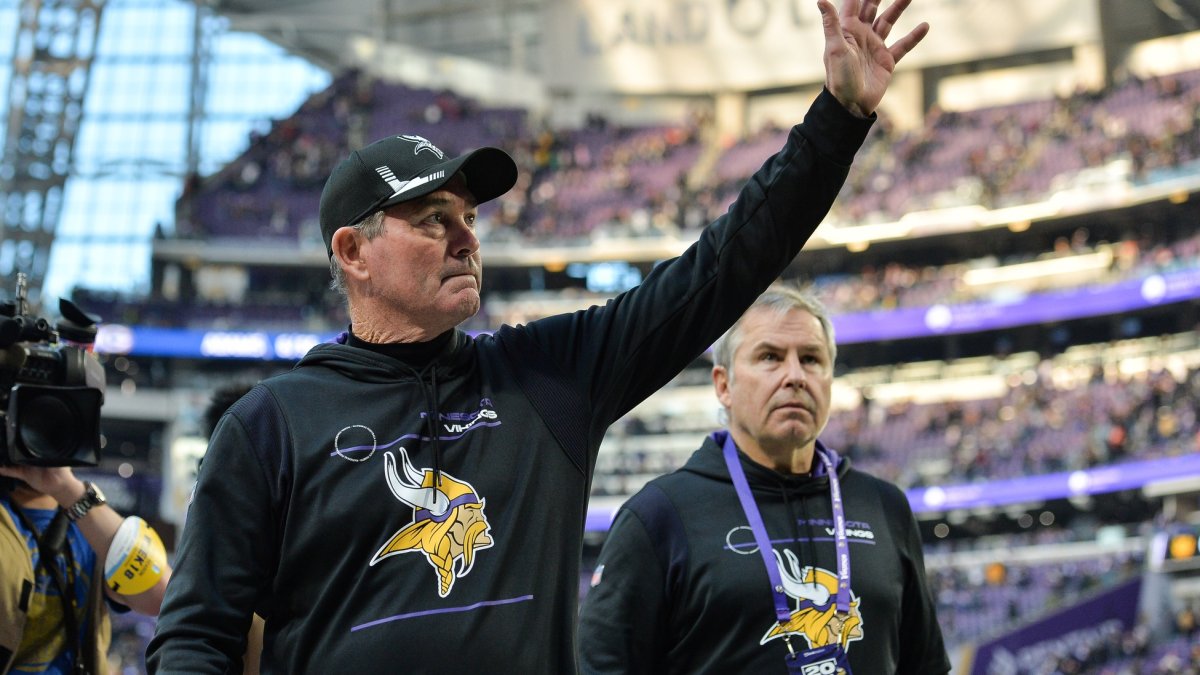The Minnesota Vikings are one of the most enigmatic franchises in the history of the NFL. They have never won a Super Bowl — and haven't made a Super Bowl for more than four decades — but they possess one of the highest regular-season win percentages in the NFL since the 70s. They are rarely irrelevant despite never achieving glory.
Head coach Mike Zimmer and general manager Rick Spielman, fired by the Vikings after the 2021 season, continued that legacy of mediocrity-plus. The duo never guided the team to a season worse than 7-9 in eight seasons but earned only three playoff appearances, two division titles and two playoff wins during that stretch.
For the second consecutive season, the Vikings ended the campaign without ever boasting a plus-0.500 record and without a spot in the expanded NFC playoffs. The time was now to make a move.
Click here for more PFF tools:
Rankings & Projections | WR/CB Matchup Chart | NFL & NCAA Betting Dashboards | NFL Player Props tool | NFL & NCAA Power Rankings
Best Bets Tool
In this article, I want to do an autopsy on the Vikings' fall since their appearance in the 2017 NFC Championship Game. In many ways, it was a collapse that was easily foreseeable. In other ways, it was a lesson in how variance — both good and bad — can muddy outcomes and prolong the inevitable for a long-term losing bet like the last four years of Minnesota football.
We’ve done this article before. Last year, we looked at what happened to the Falcons after they fired head coach Dan Quinn and general manager Thomas Dimitroff. We even foreshadowed who Atlanta would eventually pick as their new head coach. From that article:
“Tennessee’s Arthur Smith has continued to be impressive in 2020, even without the mega efficiency that the Titans got from Derrick Henry during the second half of the 2019 season. Smith’s offense is the most similar to Shanahan’s among these options, and it may be a sneaky candidate should Bieniemy and Brady look toward Houston and possibly New York come season’s end. “
Below, we diagnose the problems in Minnesota and prescribe some solutions. In most cases, the Vikings and some of their fans made the mistake of thinking they were different, that they could buck the trends that kept so many other teams from being successful. Ultimately, they were the rule in every case and not the exception.
It’s very difficult to sustain long-term success in the NFL with a defensive-minded coach and ownership that values high floors over high ceilings
Zimmer took over the Minnesota Vikings in 2013, a year after the squad ranked dead last in scoring defense (30 points per game), 11th-worst in yards per play allowed and third-worst in expected points added (EPA) allowed per play.
While the cupboard was not bare — the Leslie Frazier regime had recently drafted Harrison Smith, Xavier Rhodes and Sharrif Floyd during the first rounds of the 2012 and 2013 NFL drafts — the turnaround was immediate, with the 2014 Vikings allowing the 11th-fewest points in football.
By 2017, the defense, having acquired and developed Danielle Hunter, Eric Kendricks, Anthony Barr, Linval Joseph and others, was the league’s leading defense in points allowed and yards per play allowed, and they ranked fifth in expected points added allowed per play. This defense led the Vikings to a 13-3 record and a berth in the NFC championship despite losing starting quarterback Sam Bradford to a knee injury early in the season.
Such consistent success on the defensive side of the ball emboldened the Vikings as they approached the second half of the Mike Zimmer era. The logic was that if they could make an NFC title game with Case Keenum at quarterback, it would follow that to win one — and a Super Bowl after that — all they needed to do was simply replace a career backup with a solid if unspectacular player at the game’s most important position.
Unfortunately, the part of the equation they miscalculated would end up being the sustainability of the brilliance of the defense. While the magnitude of the Vikings’ fall — from fourth in yards per play in 2018 to 10th in 2019 to 27th in 2020 to 26th going into last weekend — was more precipitous than many could predict, the fall itself should have been foreseeable, given the numerous studies that have shown the instability of defensive performance from season to season or even from week to week.
Additionally, one of the sources of the Vikings' brilliance defensively in 2017 — all 11 Week 1 starters also started the NFC title game — was surely good luck, and their turnabout is exacerbated on the defensive side of the ball due to the fragility described here.
Exclusive content for premium subscribers

WANT TO KEEP READING?
Dominate Fantasy Football & Betting with AI-Powered Data & Tools Trusted By All 32 Teams
Already have a subscription? Log in



 © 2025 PFF - all rights reserved.
© 2025 PFF - all rights reserved.